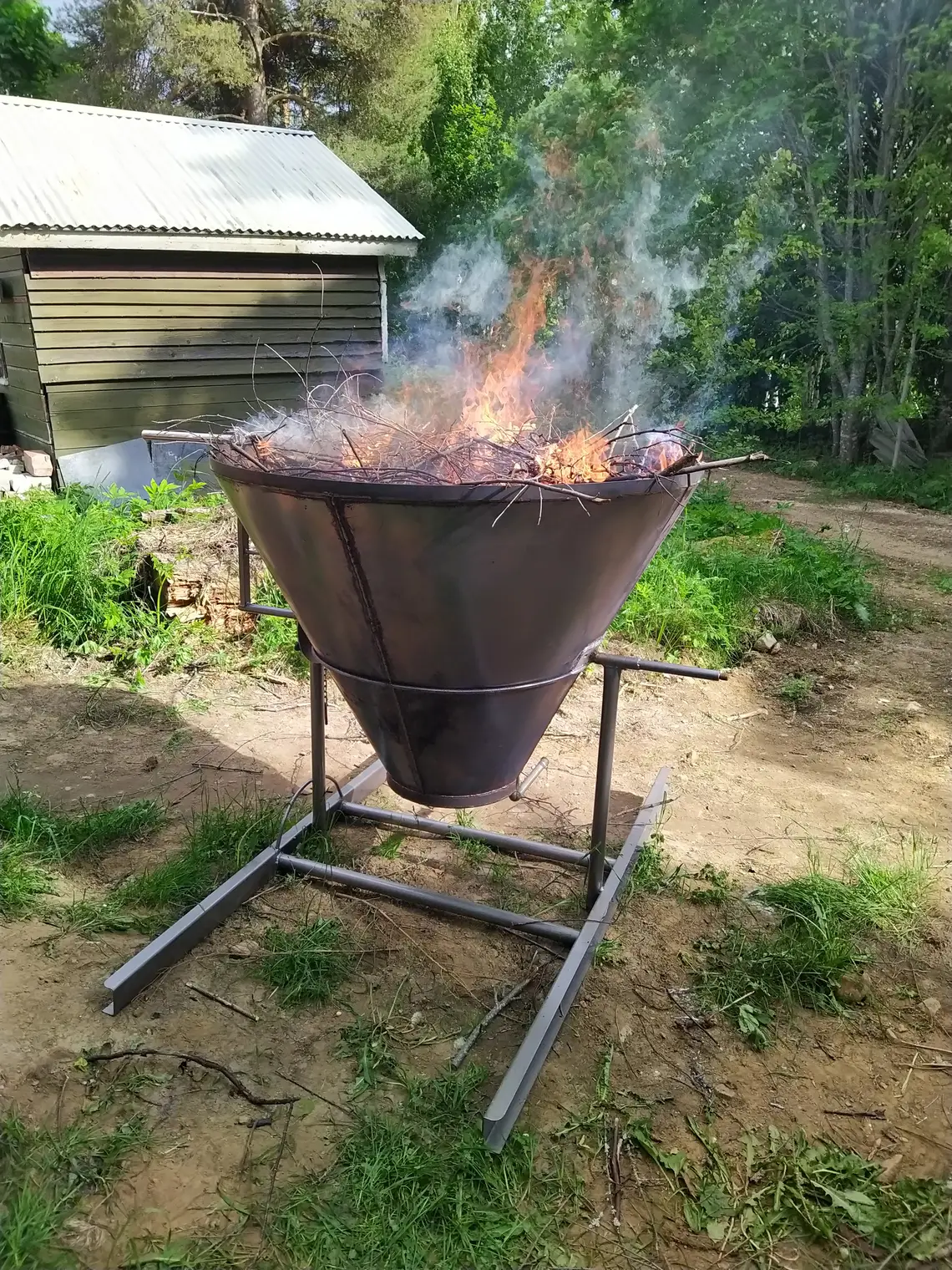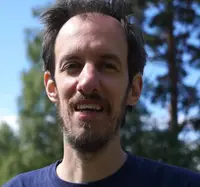In order to close the loop of my biogas systems outputs I thought of a mixture of shit, piss, effluent and charcoal some years ago. The only missing component was until recently the charcoal. Charcoal making is an art on its own, especially if huge amounts need to be made.
Why charcoal, why a kiln?
We have composting toilets with urine separation. Urine stored as liquid in bucket smells. Charcoal alone doesn’t do a lot. Urine and charcoal on the other hand are an excellent combination. Stored in soil is is permanent carbon that doesn’t or only very slowly oxidises. If soaked with nutrients from the urine the charcoal in the soil can release those nutrients over time.
As I already mentioned we have effluent from the biogas system. The liquid fertilizer alone is already very interesting but in combination with charcoal makes at super nutrient distribution system for the soil.
A kiln is not a kiln is not a kiln
I started to read about kilns on the internet and found different styles of kiln. From earth mounds made out of clay to industrial scale – everything in detail available. The different designs come with pros and cons and some of them are simply not applicable for me. An earth mound would need a lot of work when it comes to quenching and industry scale is out of question anyway.
In order to narrow it down I run a PMI analysis and at the end I had two choices: a retort or a Kontiki. A retort is made of two containers inside each other where the inner one is the pyrolysis chamber. A Kontiki is a v shaped frustum.
In order to go deeper I searched for more scientific documents and then found a lot of research around a bigger problem: Methane creation or – syngas (Google search). It depends on the type of kiln and the process how much Methane gets created. The problem is: Methane is a greenhouse gas and it is 80 times the warming power potential than of Co2.
Methane is in the air
Who would run a small scale kiln at home when the end results is actually not carbon negative or neutral but positive? Anyway, the retort actually does a good job removing the CH4 in the process but a KonTiki with a so called flame curtain is even better. I have to trust the research on this, or I don’t.
The need for more information
What does the permaculture community say
I started some longer discussions on Facebook and with friends in order to see what the current situation is. In FB it boiled down to a “I don’t know the science” or to a “does it really matter?”. While in conversation with friends the conclusion was that the holisticity of charcoal making and usage in the permaculture setting outweighs the greenhouse warming potential (GWP) of Methane.
What does a researcher say?
I was in contact with Tuomas Mattila because I wanted to get someone talking from a scientific point of view about permaculture at the PermaPuheet live in Tampere. He hasn’t had any time for the presentation though. But it was exactly during that time when I was researching kilns. What a coincidence. He commented that Methane doesn’t matter since it is unclear how lasting the effect on CH4 in the atmosphere really is. Further he stated: “So from a permaculture viewpoint, a well run cone-kiln can supplement the uses of brushy waste on a small farm.“
From plans to build – the KonTiki
If we look at the whole picture it is more about how to treat the brushy material that is more or less useless in a standard Finnish oven. Since there are not that many alternatives what to do with it charcoal making is one the solutions. After the research and conversation I was convinced to get a KonTiki and not the retort for two reasons: The retort is more complicated to handle and needs more parts. The KonTiki can be build for easy quenching and easy emptying.
In 2021 then I showed my brother-in-law a design of a KonTiki kiln and he found the project interesting. He took the specs with him and then asked some questions about size, height, etc. After some 3 month he came with a trailer and the new build KonTiki kiln. How amazing it looked! Unfortunately we haven’t had any cuttings from the coppicing area and therefore stored the kiln it in the garage.
With a diameter of 1,3 m and a height of 1 meter the kiln has a capacity of about 730 litres.
Requirements
Coppicing
At Beyond Buckthorns we have 5 coppicing areas, one additional is being built while I’m writing this. The woodland for coppicing contains mostly willow, alder and aspen where the willow is according to Finnish scientific research the best for charcoaling. We cut the trees during winter time and than piled everything up in a good relative location.
Relative location
We used a way-point analysis / flow map to determine the best location for the kiln:
- Tree transport from coppicing place to the woodworking space
- Water availability for quenching
- Distance to trees (fire)
- Distance to storage of the kiln
At the end we chose an intersection that combined all the needs.
Inauguration
Man, I waited for that day for a long time. When we had Dan McTiernan here for our first PDC we got the kiln out of the garage and ready for the first flame. I will never forget the amount of flames that shot up in the air. Amazing. Together we fed the beast until all wood branches were in. We checked visually the color of the charcoal and then started quenching. The final step was to put urine and biogas effluent into the charcoal storage. It is now resting for some time and then gets deployed to the field.





